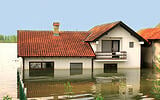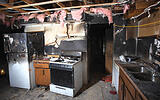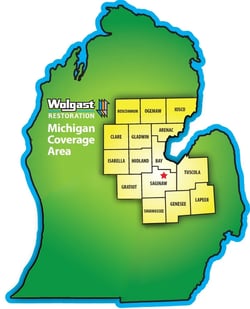

The team of Wolgast Corporation and Wolgast Restoration was created to be a high level provider of full-service restoration services to deal with all of your challenges when mayhem strikes your building. Wolgast Restoration specializes in residential and commercial restoration when it comes to structural damage from water, fire, wind, or other mishaps. And Wolgast Corporation is a commercial contractor who has specialized in buildings of all shapes and sizes since 1948.
So, what are the benefits of having your restoration company on the same team as a general contractor? The communication and actions to start planning the reconstruction portion of your project (if it’s needed) flows fluidly through the company as the experts in charge of your building talk freely and regularly. Also the strength and resources that Wolgast Corporation has developed over the past 70+ years provides a solid foundation for Wolgast Restoration to handle projects of any size.
During the clean-up portion of a project, project technicians can assess the situation and keep the construction staff informed of what’s needed and the construction staff can be estimating budgets, planning for materials, obtaining permits and organizing team coverage. All this is done without much effort on your part, because when you have endured mayhem, the last thing you want is to be burdened with is making phone calls and searching for an unknown company to preserve your building.
Wolgast Restoration is providing its services through the same systemized approach that Wolgast Corporation uses to provide its construction services. We find that having this systemized approach allows us to provide the most uniform and quality service for each unique job. It helps us move quickly to the next task rather than pause to determine what to do next, all to the benefit of our clients through time savings.
We have offices in Saginaw and Kalamazoo areas. If mayhem strikes you, please don’t hesitate to strike back with Wolgast Restoration. Call 855.965.4278 to take immediate action. In the meantime, if you have questions, please visit www.wolgastrestoration.com or call 989-790-9120 when it isn't an emergency.




 We know the importance of moving quickly to reach the optimal number of policy holders and following through with quality service to keep them happy. As a systemized company, we use a carefully constructed and laid out CAT protocol/process and are prepared to reach a wide variety of property owners in a short amount of time, plus we have the capacity and resources to effectively handle their restoration needs by drawing from our general construction division and its staff when necessary. This system guides us to know the manpower that we will need, the responsibilities of each staff member and the communication necessary to remain responsible, accountable and organized. Also, with two locations in Michigan, one near the center of the state in Freeland and one in the southwest in Kalamazoo, we’re ready to cover a large portion of Michigan to readily help you serve your clients.
We know the importance of moving quickly to reach the optimal number of policy holders and following through with quality service to keep them happy. As a systemized company, we use a carefully constructed and laid out CAT protocol/process and are prepared to reach a wide variety of property owners in a short amount of time, plus we have the capacity and resources to effectively handle their restoration needs by drawing from our general construction division and its staff when necessary. This system guides us to know the manpower that we will need, the responsibilities of each staff member and the communication necessary to remain responsible, accountable and organized. Also, with two locations in Michigan, one near the center of the state in Freeland and one in the southwest in Kalamazoo, we’re ready to cover a large portion of Michigan to readily help you serve your clients. Experiencing property loss due to a flood, fire or other disaster can be a very stressful and confusing event for the building owner. For that reason alone, it is very important that you choose a qualified restoration contractor who can answer any questions you have about the restoration process, to help alleviate your concerns. The project manager should listen closely to you and offer an open line of communication to guide you through the entire restoration process, without making you feel uncomfortable. This will ensure the project runs smoothly and gets completed on time, and to your satisfaction.
Experiencing property loss due to a flood, fire or other disaster can be a very stressful and confusing event for the building owner. For that reason alone, it is very important that you choose a qualified restoration contractor who can answer any questions you have about the restoration process, to help alleviate your concerns. The project manager should listen closely to you and offer an open line of communication to guide you through the entire restoration process, without making you feel uncomfortable. This will ensure the project runs smoothly and gets completed on time, and to your satisfaction.
 HOW SERIOUS IS BASEMENT FLOODING:
HOW SERIOUS IS BASEMENT FLOODING: Just because the snow is gone doesn’t mean you’re past the danger of a flooded basement. The ground is still frozen and in the process of thawing when the spring rains come, therefore, the ground is too saturated and/or frozen to absorb the water. The water then flows down the easiest path which is usually to your foundation wall and into your basement.
Just because the snow is gone doesn’t mean you’re past the danger of a flooded basement. The ground is still frozen and in the process of thawing when the spring rains come, therefore, the ground is too saturated and/or frozen to absorb the water. The water then flows down the easiest path which is usually to your foundation wall and into your basement. some snow. With our varying weather and temperatures, we are at a high risk of getting ice dams. Below are some reasons and solutions to stop Ice Dams before they start.
some snow. With our varying weather and temperatures, we are at a high risk of getting ice dams. Below are some reasons and solutions to stop Ice Dams before they start.